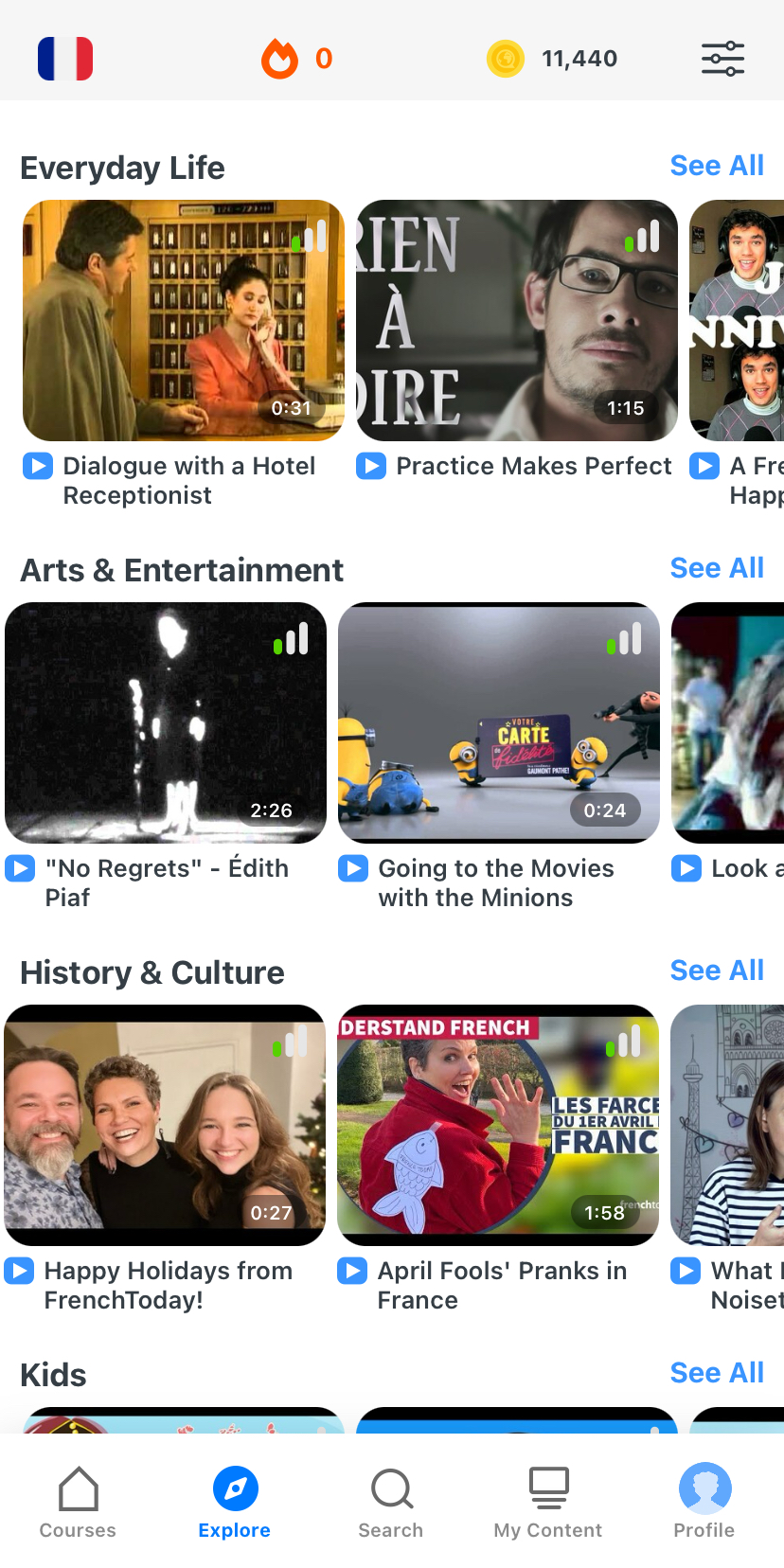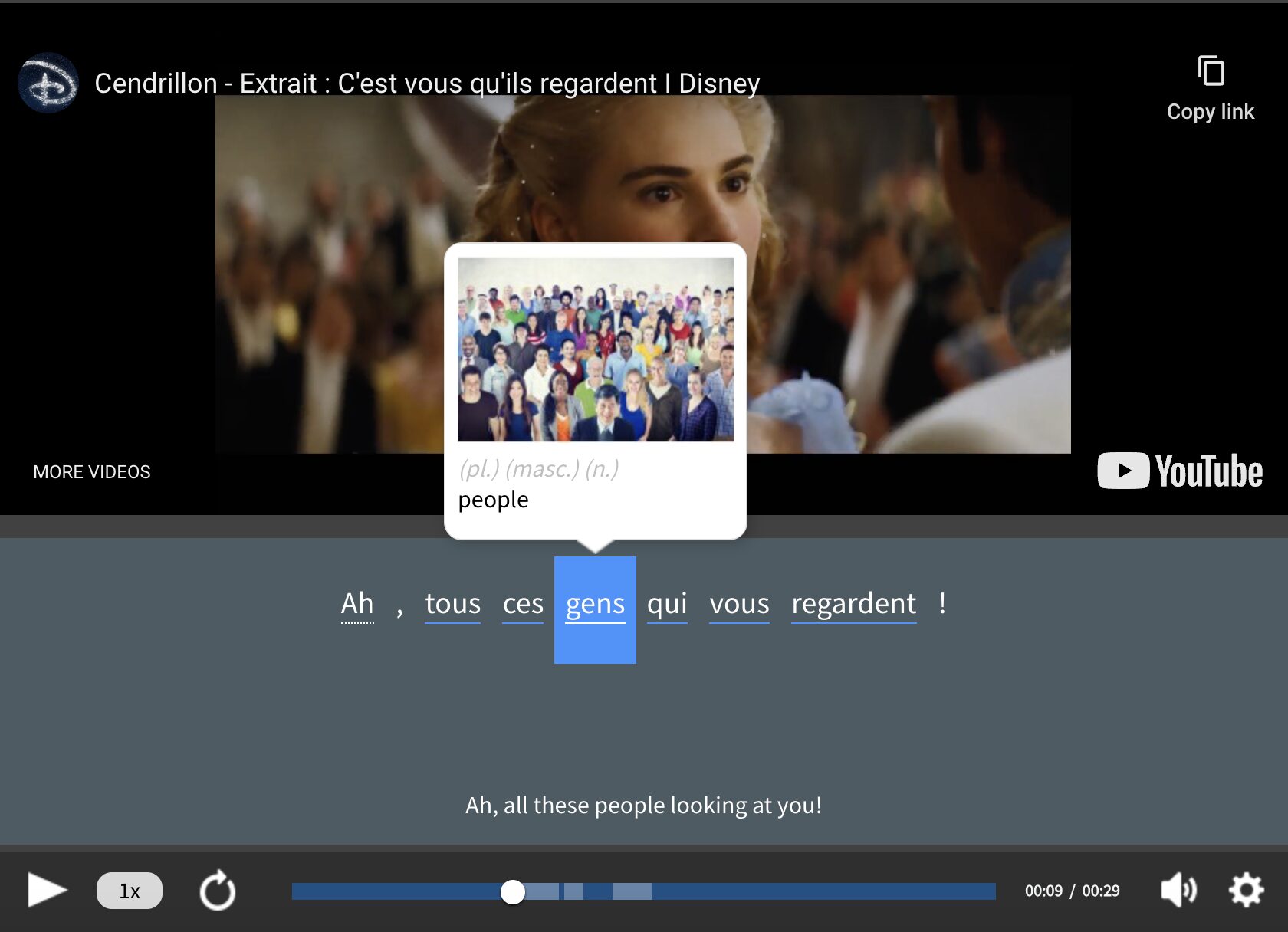How to Use French Liaisons

Using French liaisons (the linking of sounds between two words) correctly will instantly make you sound like a more natural, fluid French speaker. But how do you use them?
Keep reading to learn how to master the French liaison and stop guessing when French letters are silent or spoken.
Download: This blog post is available as a convenient and portable PDF that you can take anywhere. Click here to get a copy. (Download)
What is a Liaison?
French liaison is the linking of sounds between two words in certain contexts.
Simply stated, it’s the practice of taking the last letter of one word (which normally wouldn’t be pronounced) and linking it to the beginning of the next word. This only happens when the second word begins with a vowel sound.
But, why? Well, since final consonants in French words are (usually) not pronounced, most of them end with a vowel sound. This means that to go from the end of one word to the beginning of a word with a vowel, you need to make a glottal stop (a sort of vocal hitch, like when British people with a Cockney accent pronounce “butter” or “bottle” without saying the middle “t” sound).
To avoid having to make this sound, you pronounce the final consonant of the word, thus allowing the two words to be “linked” together.
For example, when saying les copains (friends), the final “s” of les isn’t pronounced since copains begins with a consonant.
However, in the case of les amis (another way to say “friends”), to avoid having to make a glottal stop between les and amis, you pronounce the “s” at the end of les.
In practice, things get a little more complicated. In this post we’ll walk you through all the instances where you should and shouldn’t use liaisons.
But first, it’s important to know how these sounds are actually pronounced.
How to Pronounce Letters in Liaisons
In some cases, the letter at the end of the word is merely pronounced as written.
For example, chez (at [someone’s] home) which is usually pronounced like “shay,” is pronounced with a “z” sound at the end when liaised: chez Anne (pronounced like “shay-zanne”).
With some other letters, however, the pronunciation is changed slightly.
| Normal pronunciation | Pronunciation when liaised | Example of liaison | |
|---|---|---|---|
| S | The final "s" on a word like ils (they) is normally silent | The "s" is voiced as a “z" sound when liaised | des enfants (some children) |
| D | The final "d" on a word is normally silent, like with grand (big) or quand (when) | The "d" is devoiced to "t" when liaised | un grand enfant (a big child) |
| N or M | The final "n" and "m" in a word normally nasalize the preceding vowel, like in pain (bread) | "n" and "m" are slightly de-nasalized when liaised | The "n" in the liaison in bien-aimé (beloved) is sort of like the denasalized "n" in bonne (good [feminine]) |
Generally speaking, these rules make it easier to distinguish between similarly-pronounced sentences. For example, you wouldn’t have a hard time telling the difference between Ils ont (They have) and Ils sont (They are) because of the difference in the ways the letter “s” is pronounced.
Unfortunately, however, there are a few terms that end up sounding rather similar. Consider:
- Quant à (as for) and Quand t’as (when you have)
- Bien âgé (rather old) or bien nager (swim well)
In these types of cases, context is your only guide!
It can be helpful to see and hear all these rules in action, such as in videos featuring native speakers. With proper filtering, certain YouTube clips can be used. You can also now turn any video into a language learning lesson with the help of FluentU.
FluentU takes authentic videos—like music videos, movie trailers, news and inspiring talks—and turns them into personalized language learning lessons.
You can try FluentU for free for 2 weeks. Check out the website or download the iOS app or Android app.
P.S. Click here to take advantage of our current sale! (Expires at the end of this month.)
When Do You Liaise?
Okay, so every time you have two vowel sounds back-to-back, you pronounce the silent consonant, right?
…If only it were that simple.
French liaison is linked to grammar: you’ll only link two words that are already linked grammatically. Depending on how the words are related in the sentence, then, the liaison can either be required, forbidden or optional.
We’ll cover each of those instances below.
1. Required Liaisons
Let’s start with the places where liaisons are mandatory. Any time you’re confronted with the following situations, you must link the two words.
| Rule | Explanation | Examples |
|---|---|---|
| After Determiners | French words are often accompanied by a determiner—such as indefinite/definite articles, possessive adjectives, etc. In the case of plural words in French, this determiner will always end in an “s,” which means that if the noun in question starts with a vowel, that “s” will be linked to the next word and pronounced. | Les amis
(Friends) Mes enfants (My children) Quelles écoles ? (Which schools?) Des auteurs (Authors) Nos enfances (Our childhoods) |
| After Subject Pronouns | Several French subject pronouns end in unpronounced consonants: nous, vous, ils and elles (respectively: we, formal you, masculine they and feminine they) and on (one). When these subject pronouns are used with verbs that start with a vowel, you need a liaison. Consider the difference between vous faites (you do) and vous avez (you have). In the first, the “s” at the end of vous isn’t pronounced. In the second, it is. | Nous avons
(We have) On a (One has) Elles ont (They have) |
| After Pre-posed Adjectives | While French adjectives usually come after the noun, there are certain exceptions to this rule. The adjective pairs bon/mauvais (good/bad) and grand/petit (big/small) generally come before the noun. So do adjectives describing beauty. When adjectives come before the noun they’re modifying, and the noun begins with a vowel, the final consonant of the adjective is pronounced. | Un bon artichaut
(A good artichoke) Un petit-enfant (A grandchild) Des belles oranges (Beautiful oranges) |
| After Est, Très and Bien | There are a few words after which a liaison is always necessary. You can remember them by using this mnemonic: C’est très bien ! (It’s very good.) | Est: Est-il allé ?
(Did he go?) Il est allé. (He went.) Très: Il est très étrange. (He’s very strange.) Bien: C’est bien aimable de votre part ! (That’s very kind of you!) |
2. Forbidden Liaisons
In some places, you cannot ever liaise between a final consonant and a vowel. In these cases, you do make a glottal stop or a break between the end of one word and the beginning of the following one, because grammatically, these words aren’t linked enough to require a vocal link.
| Rule | Explanation | Examples |
|---|---|---|
| After a Singular Noun | If a singular noun ends in a consonant that isn’t usually pronounced, it shouldn't be liaised. | The word brebis (sheep) is pronounced without the final "s" whether you’re saying La brebis veut de la paille (The sheep wants hay) or La brebis aura de la paille tout à l'heure (The sheep will get some hay later). |
| After a Proper Name | As with singular nouns, if a proper name ends in a consonant that isn't usually pronounced, it shouldn't be liaised. | The final "n" of Jean or the final "s" of Jacques will be silent, no matter what Jean and Jacques are doing. |
| After Et | French learners are often confused when they learn that est (is) and et (and) are pronounced the same way, but there are a few ways in which French grammar differentiates them—one of which is the fact that est is liaised and et is not. | Jean est allé.
(He went.) The "t" at the end of est is pronounced. Jean et André (Jean and André) The "t" at the end of et is not pronounced. |
| In Plural Forms of Compound Nouns | When pluralizing French compound nouns, you often wind up with an "s" sound right next to a vowel sound. You might assume that the extra "s" would be pronounced, but you'd be mistaken. This liaison is forbidden. | For example, arc-en-ciel (rainbow) becomes arcs-en-ciel (rainbows) in the plural. |
| Before H Aspiré | In French, "h" is always a silent letter. However, in Old and Middle French, the "h" on certain words was pronounced, much in the way it still is in English. While the "h" is no longer ever pronounced in French, there's one holdover from this former tendency, which is to avoid liaison in words where "h" was once pronounced. | In French, hôpital
(hospital) has an h muet or non-aspirated "h." So if you wanted to say les hôpitaux
(hospitals) there's a liaison between the two words. Héros (hero), on the other hand, has an h aspiré. So if you wanted to say les héros (heroes), you wouldn't liaise. Here are more words that have an aspirated "h," and therefore don't have a liaison: Les haricots (Beans) Les hauteurs (Heights) Les halles (Halls) Les hanches (Hips) Les Hollandais (Dutch people) A complete list of French words with an aspirated "h" can be found here. |
| Before Numbers Starting with a Vowel | Onze (eleven) and une (one) both start with vowels, so they definitely get liaised, right? If only it were that simple. Numbers as nouns resist liaison, even numbers starting with a vowel. | If you wanted to say, “I pay my credit card bill every eleventh of the month,” you’d say, "Je règle ma carte de crédit tous les onze du mois," and you wouldn't pronounce a liaison between les and onze. |
3. Optional Liaisons
In some cases, it’s up to you whether you want to liaise or not!
Generally speaking, when liaison is optional, most people opt not to. Choosing to pronounce a liaison when it’s not necessary makes you sound very intelligent, but it can also come off as snobbish.
Here are cases in which liaison is allowed but not required:
| Rule | Explanation | Example |
|---|---|---|
| After Pas, Trop and Fort | This rule is easy to remember. Just use the mnemonic Pas trop fort ! (Not too hard!) | The following sentences could be pronounced with or without the liaisons between "s," "p," and "t" and the following word: Il n’est pas à l’heure. (He’s not on time.) C’est trop aimable de votre part. (That’s too kind of you.) C’était fort agréable. (That was quite fun.) |
| After Quand and Before Est-ce que | This is a very specific example that nevertheless comes up quite frequently, given how often quand (when) and est-ce que (interrogative “is”) are paired together. | Quand est-ce que tu arrives ? (When will you be here?) can be pronounced either with or without a liaison between the final "d" in quand and est. |
Using liaison is something that may take a bit of getting used to, but take heart: even some French people have a hard time with it!
These days, you’ll hear French youngsters accidentally liaising with the h aspiré in haricots, so even if you make a mistake now and then, you’re in good company.
Plus, there are plenty of great resources to help you perfect your French pronunciation.
Bonne chance !
Download: This blog post is available as a convenient and portable PDF that you can take anywhere. Click here to get a copy. (Download)
And One More Thing...
If you like learning French at your own pace and from the comfort of your device, I have to tell you about FluentU.
FluentU makes it easier (and way more fun) to learn French by making real content like movies and series accessible to learners. You can check out FluentU's curated video library, or bring our learning tools directly to Netflix or YouTube with the FluentU Chrome extension.
One of the features I find most helpful is the interactive captions—you can tap on any word to see its meaning, an image, pronunciation, and other examples from different contexts. It’s a great way to pick up French vocab without having to pause and look things up separately.
FluentU also helps reinforce what you’ve learned with personalized quizzes. You can swipe through extra examples and complete engaging exercises that adapt to your progress. You'll get extra practice with the words you find more challenging and even be reminded you when it’s time to review!
You can use FluentU on your computer, tablet, or phone with our app for Apple or Android devices. Click here to take advantage of our current sale! (Expires at the end of this month.)











